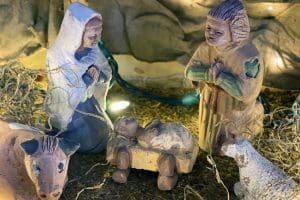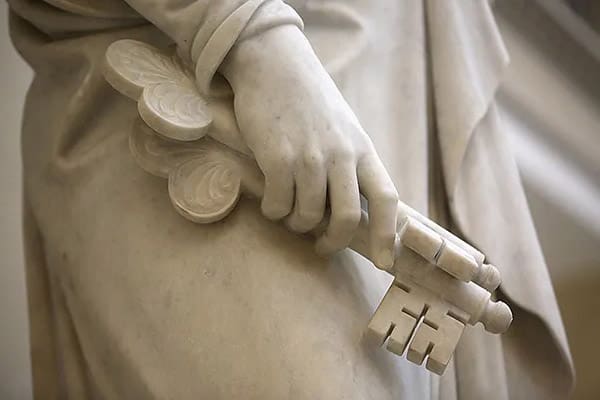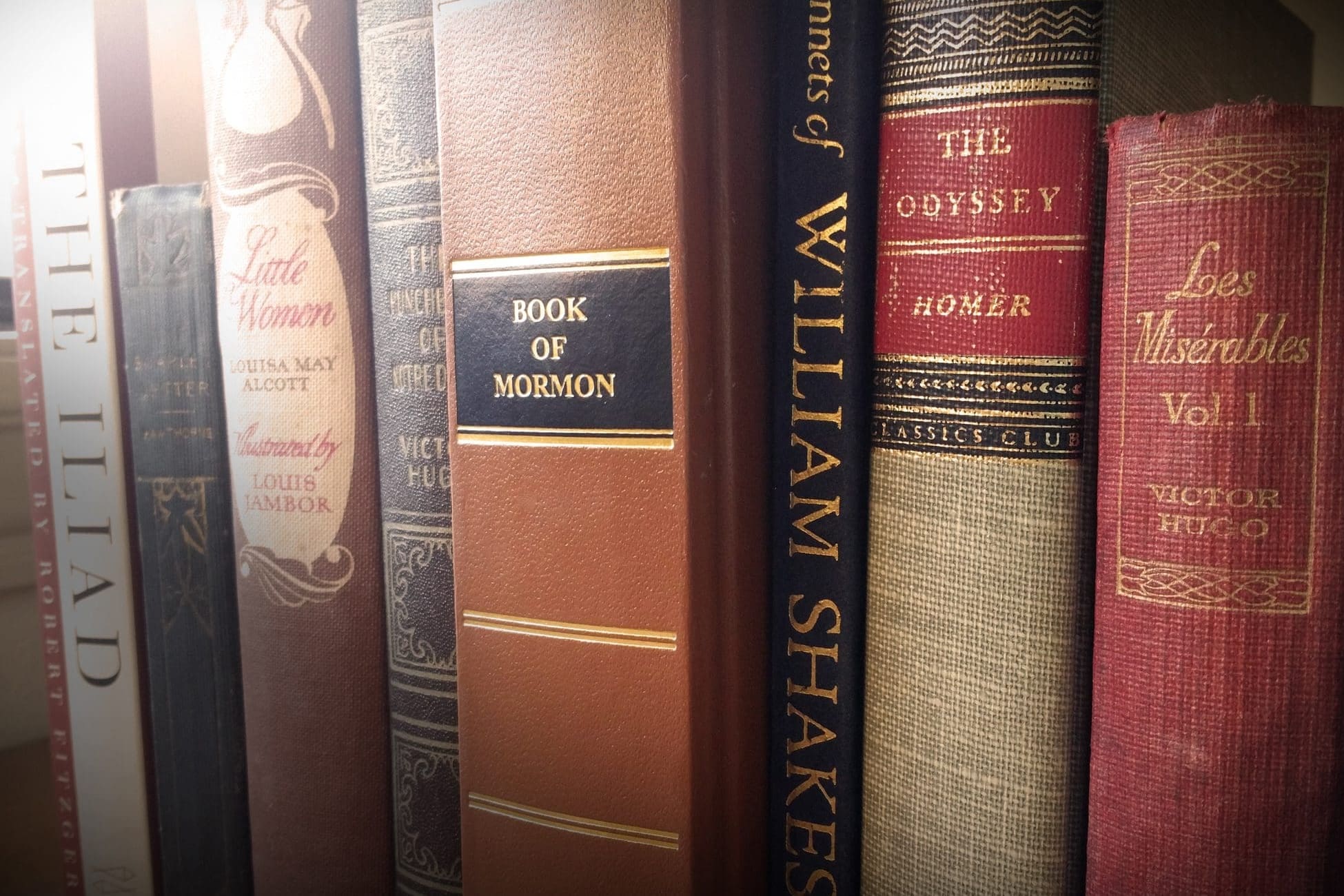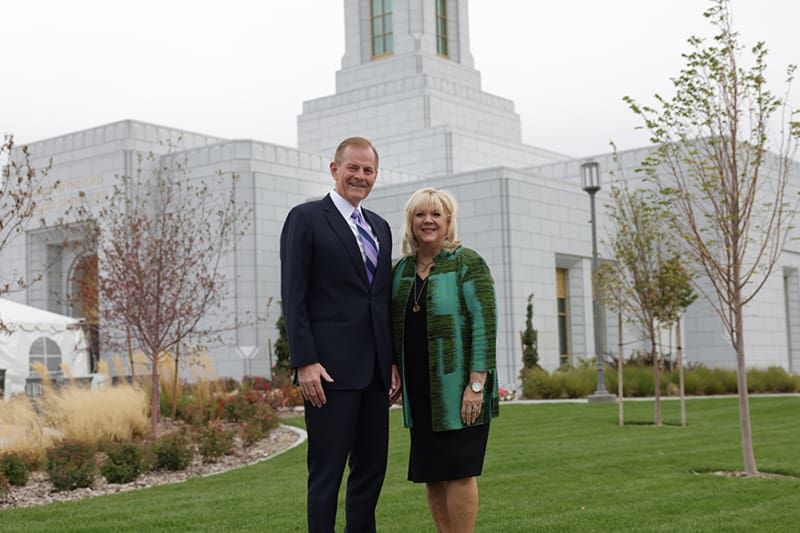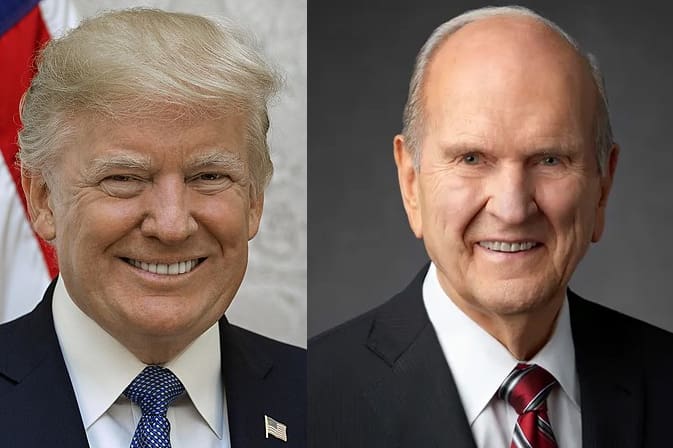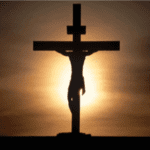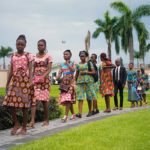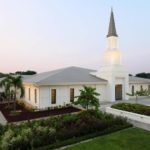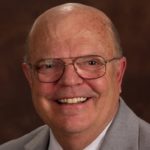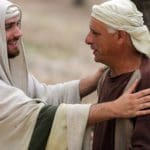Preregistration Is Open for 2026 FSY Conferences
The following was originally published on the Church Newsroom. To read the original article, CLICK HERE.
Preregistration for 2026 For the Strength of Youth (FSY) conferences in the United States and Canada is now open.
FSY conferences of The Church of Jesus Christ of Latter-day Saints are five-day experiences where youth gather to strengthen their faith in Jesus Christ, build lasting friendships, and have fun in a safe, uplifting environment. These conferences take place each year in locations around the world.
Each stake in the United States and Canada is assigned a cycle (even years or odd years) to attend local sessions. For youth in stakes that are on-cycle, they can preregister for a higher likelihood of obtaining a spot in one of their preferred sessions and attending FSY with up to five other youth of their choice, as well as more time to resolve registration and account issues. Please note that no preferences are given to youth who preregister first; all youth who preregister have the same chance of being assigned to their preferred sessions.
To see if your stake is on-cycle and, if so, the sessions assigned to your stake, view the stake assignment page.
Preregistration Information for On-Cycle Stakes
- Youth must be approved by their bishopric before they can preregister for FSY.
- Youth in on-cycle stakes can preregister from October 21, 2025, through January 13, 2026.
- Session assignments must be finalized during January 15–28, 2026, for preregistration to be completed.
- To preregister for FSY, please visit FSY.ChurchofJesusChrist.org.
If a youth in an on-cycle stake does not preregister, they can register later for remaining spaces. See the Registration Timeline for information and dates on the different phases of FSY registration.
Youth in off-cycle stakes who are interested in attending FSY in 2026 may visit the Registration Timeline for further updates.
Alternate FSY Sessions
Spanish and Spanish-supported sessions are available in select locations in the United States and are available during preregistration to stakes invited to those sessions. An American Sign Language (ASL) session and virtual sessions will be available for registration during On-Cycle Open Registration, beginning February 26, 2026.
Accommodations for dietary, disability, medical and other needs are also available. Learn more about FSY Conference Accessibility.
Why Attend FSY?
President Russell M. Nelson said, “I bless you to learn more about who you are and what your purpose really is, during this [FSY] conference” (“FSY Intro Video with President Nelson,” 2023).
FSY conferences are specifically designed to help youth have fun as they apply the gospel in all aspects of life. Youth at FSY have the opportunity to connect with peers from diverse backgrounds, learn from one another, practice gospel habits, and develop lasting friendships and powerful testimonies.
“To tell you the truth, I did not want to go to FSY,” says Eva, a former FSY participant. “I have anxiety, and I was purely terrified, … [but] throughout the week it became more and more clear to me that this was where I was supposed to be, and that was what I needed.” She continues, “[FSY] is the thing that will change your life. Your confidence is going to be boosted, you’re going to feel the Spirit, you’re going to come closer to Christ, and you’re going to come to know yourself.”
The Keys of Heaven and Apostolic Succession
During an address delivered at the April 2008 General Conference of the Church that was entitled, simply, “The Twelve,” President Boyd K. Packer related a story that struck me then and that has stuck with me ever since:
In 1976, an area general conference was held in Copenhagen, Denmark. After the closing session, President Spencer W. Kimball wanted to visit the city’s Vor Frue Church, where Bertel Thorvaldsen’s statues of the “Christus” and of the Twelve Apostles stand, and to take several of the General Authorities there.
The “Christus” stands behind the altar of the church, flanked by the apostles, with Peter to the right and the other apostles in order. Most of President Kimball’s group was back at the rear of the chapel, with the church’s custodian. Elder Packer stood up front before the statue of Peter, with President Kimball, Elder Rex D. Pinegar of the Seventy, and Johan Helge Benthin, who was then serving as the president of the Copenhagen stake.
As he is depicted in Thorvaldsen’s marble, Peter holds a set of heavy keys in his hand. In President Packer’s telling of the story, President Kimball pointed to those keys and explained what they symbolized.
“Then, in an act I shall never forget, he turned to President Benthin and with unaccustomed firmness pointed his finger at him and said, ‘I want you to tell everyone in Denmark that I hold the keys! We hold the real keys, and we use them every day.’”
Continued President Packer, “I will never forget that declaration, that testimony from the prophet. The influence was spiritually powerful; the impression was physical in its impact.
“We walked to the back of the chapel, where the rest of the group was standing. Pointing to the statues, President Kimball said to the kind custodian, ‘These are the dead Apostles.’ Pointing to me, he said, ‘Here we have the living Apostles. Elder Packer is an Apostle. Elder Thomas S. Monson and Elder L. Tom Perry are Apostles, and I am an Apostle. We are the living Apostles.
“‘You read about the Seventies in the New Testament, and here are two of the living Seventies, Elder Rex D. Pinegar and Elder Robert D. Hales.’
“The custodian, who up to that time had shown no emotion, suddenly was in tears.
“I felt I had had an experience of a lifetime.”
Although many do not, Latter-day Saints are far from the only Christians who recognize the vital importance of the “keys” of authority. The question, for such believers, revolves around who holds them.
Many years ago, for example, when I was a graduate student in Cairo, Egypt, my wife and I lived just above an American Lutheran clergyman and his family. He was the pastor of the local expatriate Protestant church, and we became friends. One day, somewhat upset, he told me of an experience that he had just had while meeting with the patriarch of Egypt’s Coptic Orthodox Church, the bishop of Alexandria, who is often also called “pope.” Very quickly, my friend told me, Pope Shenouda had made it clear that, while he recognized Catholic and Greek Orthodox clergy and others as part of the apostolic and episcopal “succession,” from his point of view, Protestant schismatics (such as my friend the pastor) were outside of that line of authority and, thus, mere laymen.
Visitors to St. Peter’s Basilica in Vatican City, a veritable monument in stone to the authority claimed by the popes, will surely have noticed the omnipresence in that vast building of the papal crown atop two crossed keys. And the large inscription that runs around the interior of Michelangelo’s great dome—its blue letters are nearly 6.5 feet high against a gold background—reads as follows: “Tu es Petrus et super hanc petram aedificabo ecclesiam meam et tibi dabo claves regni caelorum” (“Thou art Peter, and upon this rock I will build my church and I will give unto thee the keys of the kingdom of heaven.” Compare Matthew 16:18-19.)
The ancient Catholic and Orthodox communions trace their authority back through what they believe to be an unbroken line of bishops to the original apostles. By contrast, Latter-day Saints believe that the line of authority has been broken. Thus, priesthood authority and priesthood keys had to be restored by heavenly messengers who were sent in the early nineteenth century.
Since the death of President Russell M. Nelson late on Saturday, 27 September 2025, members of the Church of Jesus Christ of Latter-day Saints have been receiving a refresher course on apostolic succession in the presidency of the Church. What has been unfolding was set in place largely by the events that followed the assassination of the Prophet Joseph Smith and his brother Hyrum on 27 June 1844. The 2024 Interpreter Foundation dramatic film “Six Days in August” tells that story, and the Foundation’s forthcoming series of short documentaries (“Becoming Brigham”) will, among other things, expand on those pivotal events.
Immediately upon President Nelson’s passing, Dallin H. Oaks assumed leadership of the Church in his capacity as senior apostle. And, by “immediately,” I mean “instantaneously.” This has been the procedure for many years, as a story related by President N. Eldon Tanner, to an audience at Brigham Young University in 1978, beautifully illustrates.
President Tanner had been serving as first counselor to President Harold B. Lee in the First Presidency of the Church. On 26 December 1973, he was in Phoenix, Arizona, having spent Christmas with his daughter and her family. Suddenly, he received a telephone call from D. Arthur Haycock, President Lee’s secretary, informing him that President Lee was seriously ill. Brother Haycock suggested that President Tanner return home as soon as possible. However, Brother Haycock called again about half an hour later. “The Lord has spoken,” he said. “President Lee has been called home.”
I quote President Tanner’s retelling of what happened next:
“President [Marion G.] Romney, Second Counselor, in my absence, was directing the affairs of the Church, and was at the hospital with Spencer W. Kimball, President of the Council of the Twelve. Immediately upon the death of President Lee, President Romney turned to President Kimball and said, “You are in charge.” Remember, the Prophet Joseph Smith had said that without the President, there was no First Presidency over the Twelve.
“Not one minute passed between the time President Lee died and the Twelve took over as the presiding authority of the Church.”
However, the process wasn’t always so clearly understood. When Joseph Smith and his brother Hyrum were murdered at Carthage Jail, Latter-day Saints were both stunned and confused. Who would assume leadership of the Church? They had no precedent to guide them. Sidney Rigdon, who had served as first counselor to Joseph Smith, claimed the right of succession by virtue of his place in the Church’s First Presidency.
His claim seems, though, to have contradicted what is recorded in Teachings of the Prophet Joseph Smith: “President Smith next proceeded to explain the duty of the Twelve, and their authority, which is next to the present Presidency. … Also the Twelve are not subject to any other than the First Presidency, … ‘and where I am not [meaning the President of the Church], there is no First Presidency over the Twelve’” (105-106).
The Twelve returned to Nauvoo from their mission assignments and, under their president, Brigham Young, also asserted leadership. Over the next months and years, still other claimants would assert their claims, but Sidney Rigdon and the Twelve were the most prominent candidates in mid-1844.
On what basis did the Twelve claim leadership of the Church? They did so on the basis of the keys that they held. But the history of those keys is perhaps more complicated than many realize. In 1835, when the modern Quorum of the Twelve Apostles was organized, its members received the keys of the apostleship as they then existed. However, by 1836, there were keys on the earth that the Twelve had not been given.
How could this be? On 3 April 1836, Moses and Elias, and Elijah appeared to Joseph Smith and Oliver Cowdery in the newly dedicated Kirtland Temple and conferred new keys of authority upon them that had been unavailable when the Twelve were called. For some time thereafter, Joseph and Oliver held those new keys, but no others did.
Unfortunately, Oliver Cowdery was excommunicated in April 1838, slightly more than two years after the new keys had been conferred upon him at Kirtland. Thus, for a time, Joseph Smith was the only man on earth who held the new authority that Oliver had once shared but had forfeited. Had Joseph died during the next two years or so—had he, for example, not emerged from Liberty Jail alive—those keys would have needed to be restored again by heavenly messengers.
This rather precarious situation continued until the great Nauvoo revelation of 19 January 1841, which we now know as Doctrine and Covenants 124. In verses 94 and 95 of that revelation, speaking of Hyrum Smith, the Lord says,
“I appoint unto him that he may be a prophet, and a seer, and a revelator unto my church, as well as my servant Joseph; that he may act in concert also with my servant Joseph; and that he shall receive counsel from my servant Joseph, who shall show unto him the keys whereby he may ask and receive, and be crowned with the same blessing, and glory, and honor, and priesthood, and gifts of the priesthood, that once were put upon him that was my servant Oliver Cowdery.”
Thereupon, within a week, an announcement appeared in the Church newspaper, the “Times and Seasons,” that new officers had been set apart according to the instructions given in the revelation. Hyrum was released as a counselor in the First Presidency and became, instead, what has been called an “associate president,” or a “co-president,” holding all of the keys of priesthood authority with his younger brother.
Importantly, there appears to be no evidence that those keys of authority were ever conferred upon Sidney Rigdon. And it is intriguing to think that, if Hyrum had outlived Joseph, he might have succeeded his brother as the president of the Church. But he didn’t. He was the first of the two to be killed at Carthage; he died a minute or two before Joseph did. So were the keys gone from the earth with the death of both Joseph and Hyrum?
They were not. Apparently sensing that he would not live much longer, Joseph Smith took several important measures in 1843 and early 1844 to ensure that the keys would be shared by others. We don’t know the date on which Brigham Young received the sealing key. Happily, though, we have a witness who testifies that he did. In January 1845, six months after Joseph Smith was killed, Parley Pratt published a proclamation to the Saints in which he recounted many of the steps that Joseph took in preparing the Twelve for his passing. And Elder Pratt specifically says that he was a witness to Brigham Young’s receiving the sealing key, the final key of authority.
In March 1897, in his ninety-first year, President Wilford Woodruff testified, speaking into an early recording device, of an event that is sometimes called the “Last Charge” meeting. It probably occurred on 26 March 1844. To me, it is remarkable to hear the voice of a man who not only knew Joseph Smith but who had served as an apostle during Joseph’s lifetime. But what he chose to say is also remarkable. Here are some of President Woodruff’s words from that recording:
“I bear my testimony that in the early spring of 1844, in Nauvoo, the Prophet Joseph Smith called the Twelve Apostles together and he delivered unto them the ordinances of the church and kingdom of God; and all the keys and powers that God had bestowed upon him, he sealed upon our heads, and he told us that we must round up our shoulders and bear off this kingdom, or we would be damned. I am the only man now living in the flesh who heard that testimony from his mouth, and I know that it was true by the power of God manifest to him. At that meeting he stood on his feet for about three hours and taught us the things of the kingdom. His face was as clear as amber, and he was covered with a power that I had never seen in any man in the flesh before.”
Even so, the apostles seem not to have fully comprehended what Joseph was doing and what it meant for them. Much like the ancient Twelve whom Jesus had warned several times of his pending death, they were nonetheless surprised and confused at the loss of their prophet. Brigham Young himself recalled that, when he first heard of Joseph’s death, he was not only overcome by grief but feared that the keys of the priesthood were gone. Then, he said, “I felt it come like a flash of lightning to my mind, and I said ‘the keys of the kingdom are here.’”
All of this accorded with what had only been hinted at in Doctrine and Covenants 107, which was received in or near April 1835, in connection with the organization of the Twelve:
“Of the Melchizedek Priesthood, three Presiding High Priests, chosen by the body, appointed and ordained to that office, and upheld by the confidence, faith, and prayer of the church, form a quorum of the Presidency of the Church. . . . And again, the duty of the President of the office of the High Priesthood is to preside over the whole church, and to be like unto Moses— . . . yea, to be a seer, a revelator, a translator, and a prophet, having all the gifts of God which he bestows upon the head of the church.”
And again: “The twelve traveling councilors are called to be the Twelve Apostles, or special witnesses of the name of Christ in all the world. …
“And they form a quorum, equal in authority and power to the three presidents” (Doctrine and Covenants 107:22-24, 91-92).
At the death of Joseph Smith, the Twelve became the presiding authority of the Church, with Brigham Young as president of the Twelve, and administered the affairs of the Church for three and a half years. Then Brigham Young was chosen as President of the Church, and he selected and ordained, and set apart his counselors. Then there were three years and two months between his death and the installation of John Taylor as President of the Church. Following John Taylor’s death, it was one year and nine months before Wilford Woodruff was chosen, set apart, and ordained as President of the Church. Since then, just a few days have passed between the death of the President and the setting apart of the next President—and the Twelve continue to preside at the death of each President until—as we have just witnessed—a new First Presidency is organized.
Notes
This article was heavily influenced by Ronald K. Esplin, “‘All the Measures of Joseph’: The Succession of 1844,” in Jeffrey M. Bradshaw, ed., Joseph Smith: A Life Lived in Crescendo (Orem: Interpreter Foundation and Eborn Books, 2024), and by my interview with Dr. Esplin for the forthcoming Becoming Brigham series. Another relevant chapter in that two-volume set is Jeffrey M. Bradshaw, “Dennison Lott Harris’ firsthand accounts of the conspiracy of Nauvoo and the transmission of apostolic keys.”
The full recording of Wilford Woodruff’s 1997 recorded testimony is available at https://www.youtube.com/watch?v=5NjANSFISFY. See also Richard Neitzel Holzapfel and Stephen H. Smoot, “Wilford Woodruff’s 1897 Testimony” (https://rsc.byu.edu/banner-gospel-wilford-woodruff/wilford-woodruffs-1897-testimony).
The two speeches from which I quote are Boyd K. Packer, “The Twelve” https://www.churchofjesuschrist.org/study/general-conference/2008/04/the-twelve?lang=eng, and N. Eldon Tanner, “Administration of the Restored Church” https://speeches.byu.edu/talks/n-eldon-tanner/administration-restored-church/
Dallin H. Oaks Ordained as Church’s New President
In a closed-door session that was streamed to the world, a new First Presidency was called on Tuesday, October 14, 2025, with Dallin H. Oaks called as prophet and the 18th president of the Church in this dispensation. Henry B. Eyring and D. Todd Christofferson were called as his first and second counselors after what President Oaks called “an extended process of fasting and prayer.”
President Jeffrey R. Holland, under a newly conferred title, is the president of the Quorum of the Twelve Apostles.
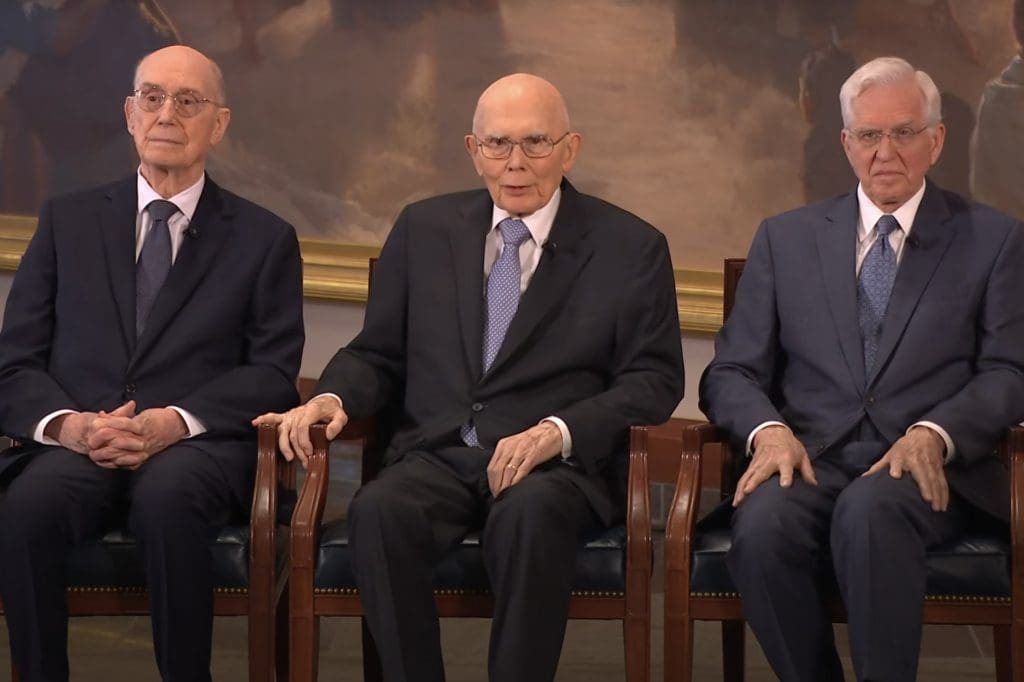
With this new First Presidency, it is clear once again how seamlessly and generously organization in the Church is passed. It is a divinely-inspired process. With the death of President Russell M. Nelson on 27 September, the First Presidency was dissolved, and the Church has been under the leadership of the Quorum of the Twelve Apostles for the past 16 days, led by President Oaks, the longest-serving apostle. Not a pause nor a distraction affected the onward march of the Church. Men who are called as presidents of the Church have in-depth training for decades before assuming this post.
President Oaks came from a stellar professional life in the law and taught at the University of Chicago Law School, was twice considered by U.S. presidents to serve on the U.S. Supreme Court, and was president of BYU. He has been an apostle for forty-one years, including his time as a First Counselor to President Nelson.
The meeting to reorganize the First Presidency was held the morning of the announcement.
President Dallin B. Oaks Testifies
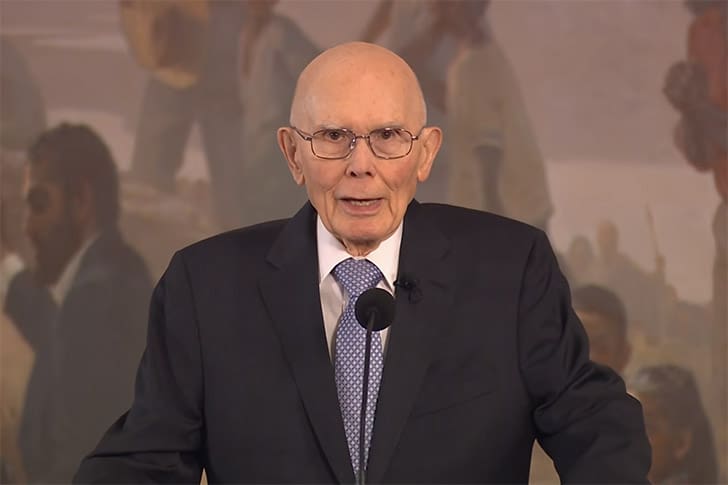 President Oaks said, “I know beyond any certainty in my life that this is The Church of Jesus Christ of Latter-day Saints, restored with the fullness of the gospel that God has chosen to reveal in this dispensation of the fullness of times, and led by prophets to the present day.
President Oaks said, “I know beyond any certainty in my life that this is The Church of Jesus Christ of Latter-day Saints, restored with the fullness of the gospel that God has chosen to reveal in this dispensation of the fullness of times, and led by prophets to the present day.
“I accept with humility the responsibility that God has placed upon me and commit my whole heart and soul to the service to which I’ve been called…”
“I testify that the Lord speaks to the apostles of His Church and through the apostles of His Church, according to the organization that has been revealed to serve us in these latter days.
“I am grateful for the prayers offered by so many members of the church for a new First Presidency. I have felt the effect of those prayers, and with my counselors, we will strive in all respects to press forward this great work. Most recently, we’ve been led by a magnificent prophet of the Lord, President Russell M. Nelson. We have much work to do to fulfill the challenges he has given us, and there is more yet to come, of which I testify in all humility.
 “The Lord still speaks through His servants. There is much to be done, for our ministry is a ministry to all the children of God on the face of the earth. We pray for all, we seek to serve all, and we invoke the blessings of the Lord Jesus Christ upon all who seek to serve Him, to do so in worthiness and commitment and optimism.
“The Lord still speaks through His servants. There is much to be done, for our ministry is a ministry to all the children of God on the face of the earth. We pray for all, we seek to serve all, and we invoke the blessings of the Lord Jesus Christ upon all who seek to serve Him, to do so in worthiness and commitment and optimism.
“We do not have the answers to all of the world’s problems. They’ve not been revealed. But what we do know is that we are all children of Heavenly Parents and that we are called to serve all of the children of God in this wonderful, restored church of Jesus Christ of Latter-day Saints.”
Other members of the First Presidency and Elder Jeffrey R. Holland, as president of the Quorum of the Twelve, were asked to bear testimony.
President D. Todd Christofferson’s Surprise
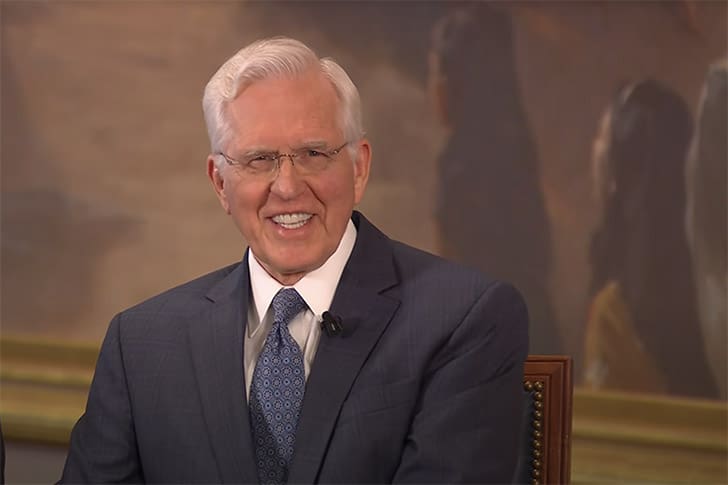 President D. Todd Christofferson said, “I confess that this is not what I expected when I woke up this morning, but I am deeply honored by this calling and the trust that it carries. At the same time, I recognize that I’m not called to be honored, but called to serve.”
President D. Todd Christofferson said, “I confess that this is not what I expected when I woke up this morning, but I am deeply honored by this calling and the trust that it carries. At the same time, I recognize that I’m not called to be honored, but called to serve.”
He spoke of slipping into a meeting where he was not invited years ago in Washington D.C. to hear Dallin Oaks “and I was impressed with his many qualities and his intellect, but most of all his spiritual depth, and I bear witness as I have been part of the process, that he is called of God in this current position, this weighty responsibility.”
He proclaimed, “It is Jesus Christ who is the head of the Church. I know that. I bear witness of it. I am more sure of it every day. I know Him. I honor Him. I pledge my life and discipleship to Him.”
President Henry B. Eyring-“I Have Seen the Power of God”
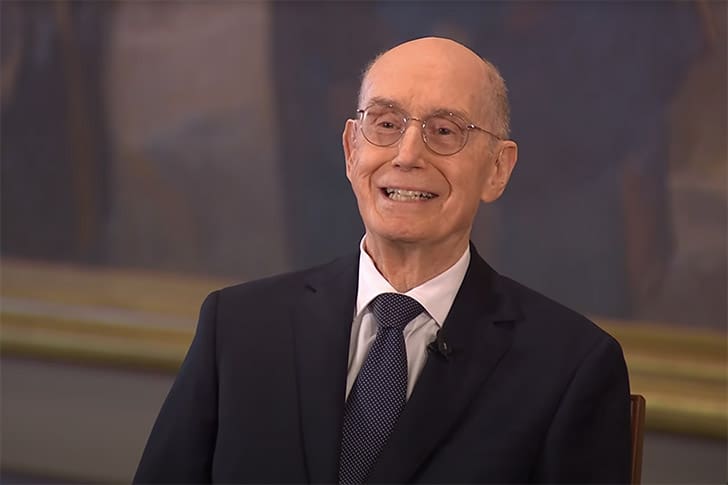 President Henry B. Eyring said, “I am equally surprised…at the wonderful opportunity to serve in the First Presidency of The Church of Jesus Christ of Latter-day Saints…I cannot express the gratitude that I feel for the trust, the trust from the Lord…I love Him and know Him and can testify…that He is the Head of the Church of Jesus Christ of Latter-day Saints.
President Henry B. Eyring said, “I am equally surprised…at the wonderful opportunity to serve in the First Presidency of The Church of Jesus Christ of Latter-day Saints…I cannot express the gratitude that I feel for the trust, the trust from the Lord…I love Him and know Him and can testify…that He is the Head of the Church of Jesus Christ of Latter-day Saints.
“By inspiration. I have seen the power of God come upon him [President Oaks], and it has been a reassuring thing to me to know that just as in the days of old, when Peter and others would lead the Church, that the people would be able to recognize that he was the Lord’s servant to the Church.
He said that knows the faith and trust of the people will sustain them in this great work of the restoration and final preparation of the Lord’s Church for His coming.
“I bear my testimony that this preparation is occurring and that President Oaks is the perfect one to do the things that I know the Lord will want.”
President Jeffrey R. Holland-“We Know This is the Lord’s Will”
 President Jeffrey R. Holland said, “I am thrilled to speak for the Quorum of the Twelve Apostles, the seven Presidents of the Seventy, the Presiding Bishopric, and organization heads, all of whom support and sustain unequivocally, President Dallin H. Oaks as the president, prophet, seer, and revelator leading this church for its next moment in time. We love him. We have known him. We’ve watched him be prepared and have had the confirmation that it is the Lord’s will this day, and that it has been unanimous and a very, very moving experience to see that mantle come fully and completely on President Oaks. We stand ready to serve him out to the newest convert and the most recently called missionary.
President Jeffrey R. Holland said, “I am thrilled to speak for the Quorum of the Twelve Apostles, the seven Presidents of the Seventy, the Presiding Bishopric, and organization heads, all of whom support and sustain unequivocally, President Dallin H. Oaks as the president, prophet, seer, and revelator leading this church for its next moment in time. We love him. We have known him. We’ve watched him be prepared and have had the confirmation that it is the Lord’s will this day, and that it has been unanimous and a very, very moving experience to see that mantle come fully and completely on President Oaks. We stand ready to serve him out to the newest convert and the most recently called missionary.
“I know beyond anything else I know that this is God’s church. This is The Church of Jesus Christ of Latter-day Saints. The Father and the Son and the gifts of the Holy Ghost will come upon President Oaks in full measure.”
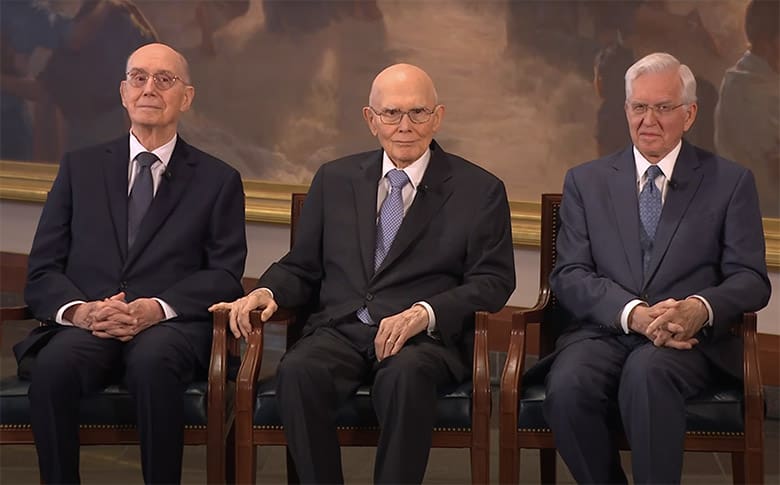 President Oaks, with his counselors in the new First Presidency, will be leading a church of 17.3 million members with a presence in 191 countries around the world.
President Oaks, with his counselors in the new First Presidency, will be leading a church of 17.3 million members with a presence in 191 countries around the world.
Why There is No Room for Middle Ground Concerning the Book of Mormon
In memory of Tad R. Callister (1945-2025), beloved leader, author, and teacher whose faith and insights reflected his deep love for the Savior. He served for over a decade as a General Authority Seventy and Sunday School General President of The Church of Jesus Christ of Latter-day Saints. We loved the articles he shared with Meridian, and know that his inspired words will continue to draw hearts to Jesus Christ.
God or the Devil?
Years ago, my great-great-grandfather Willard Richards picked up a copy of the Book of Mormon for the first time. He opened it to the center and read a few pages. He then said, “That book was either written by God or the devil, and I am going to find out who wrote it.” He read it through twice in the next ten days and then declared: “The devil could not have written it – it must be from God.”[i]
To the contrary, some have argued that the Book of Mormon is not an either/or proposition – either the work of God on one hand or the work of the devil on the other – that somehow there exists room for middle ground and hence the reference to the Book of Mormon as “inspired fiction.” To me, however, such a proposition is logically impossible under the given circumstances, or as C.S. Lewis might say, “nonsense.”
Either the angel Moroni appeared to Joseph Smith as claimed, or he did not. Either there exist gold plates containing the actual history of the Nephite civilization, or such a representation is a total fraud. Either Nephi, Alma, and Mormon were real historic figures – prophets of God as testified by Joseph, or it is all a lie. Either Christ appeared to the Nephites and ministered to them, as corroborated by all our prophets, or such an event is a fabrication. Where is the middle ground on these issues? Are we to somehow believe that God “inspired” Joseph Smith and subsequent prophets to lie about the reality of Moroni, the gold plates, the appearance of the Savior, the existence of ancient prophets, and the entire history of the Nephite civilization, yet somehow the work is still divinely directed?
One might as well claim that there is a middle ground on issues such as whether or not God exists, or whether or not there is life after death, or whether or not Christ was the literal Son of God. Some issues don’t leave room for middle ground, and the inspired nature of the Book of Mormon is one of them. Once Joseph crossed the line and said the angel was real, the plates were real, and the history and doctrine were real, then all middle territory vanished. And that I believe, is exactly how God wants it to be – no lukewarm believers (see Revelation 3:15-16). Like the premortal existence, there are to be no fence sitters on this issue.
C.S. Lewis addressed a similar proposition with regard to the divinity of the Savior: “I am trying here to prevent anyone saying the really foolish things that people often say about Him: ‘I’m ready to accept Jesus as a great moral teacher, but I don’t accept His claim to be God.’ [In other words, the claim by some that there is middle ground on the issue of whether or not He is a God]. That is the one thing we must not say. A man who was merely a man and said the sort of things Jesus said would not be a great moral teacher. . . You must make your choice. Either this man was and is the Son of God, or else a madman or something worse. . . But let us not come with any patronizing nonsense about His being a great human teacher. He has not left that open to us. He did not intend to.”[ii]
Likewise, how can one say that the Book of Mormon is a fine moral treatise on one hand and yet at the same time believe there were no golden plates, no angel Moroni, no Nephite prophets, and no visit of Christ to America, all as represented by Joseph to be true. That would be a fraud, and a fraud does not produce a final moral treatise.
Evidences of the Divine Nature of the Book of Mormon
If the Book of Mormon is the work of God, then what witnesses do we have to that effect? Fortunately, we have many witnesses, both intellectual and spiritual. There exist multiple Bible prophecies of its coming forth.[iii] There are about 200 statements from the 11 witnesses, men of honor, who repeatedly confirmed their testimony of its truthfulness even under conditions threatening their lives or questioning their integrity. But they never folded, never recanted, whatever the pressures may have been. In addition, time is on the side of the Book of Mormon as additional archaeological evidences are unearthed, such as the discovery of ancient metal plates, cement, and domesticated barley, all of which the critics claimed were anachronisms in the Book of Mormon, until they were later discovered to exist in Book of Mormon times. Likewise we have the divine eloquence of the Book of Mormon – one masterful quote after another – scores of them – such as “men are, that they might have joy” (2 Nephi 2:25) or “when ye are in the service of your fellow beings ye are only in the service of your God” (Mosiah 2:17). Most of us would be pleased in a lifetime to have two or three memorable quotes that would be savored by family and friends. The burning question then becomes: How did Joseph Smith at age 23 produce this litany of memorable phrases and sage counsel? The answer – he didn’t. They were revealed by God.
But one of the most compelling witnesses to me is the incredible, staggering doctrine found in the Book of Mormon, particularly with regard to the Savior’s Atonement. It is in this book that we learn of the infinite nature of such Atonement—its retroactive as well as prospective powers, the incomprehensible depths of Christ’s suffering, and of His ability to not only cleanse us but also perfect us. There are over 25 doctrines that I have counted for which the Book of Mormon clarifies or gives us additional insights to those found in the Bible. It is a goldmine of doctrinal truths—many of which were contrary to the teachings of the then-existing Christian world or simply unknown to it. Are we now to believe that Joseph Smith, on the edge of the frontier, newly married and trying to eke out a living, just dictated these thought-provoking doctrines off the top of his head? Hardly!
There is no credible historical dispute that Joseph Smith dictated the Book of Mormon, over 500 pages in length, without any notes over a period of about 65 working days. There was but one draft with minor corrections – mostly grammatical. When I finished my book entitled A Case for the Book of Mormon, my secretary asked me, “Do you know how many drafts you had?” I replied, “No.” She answered, “Seventy-two.” It took me several years and 72 drafts to write a book less than half the size of the Book of Mormon, and much less meaningful. And people want to tell me that Joseph Smith wrote the Book of Mormon without any notes in approximately 65 working days. It reminds me of the observation made by Hank Smith: “A man with an experience is never at the mercy of a man with an opinion.”[iv] And my experience, both intellectually and spiritually, clearly tells me that Joseph Smith did not write the Book of Mormon but rather was an instrument in the hands of God to translate it.
The Certain Test to Determine Its Truthfulness
Some years ago, a friend of mine left the Church. Among other things, he could not accept the Book of Mormon as true. Once you leave this Church, however, it ruins you for any other church because you know too much. And so it was the case for my friend. Unable to find the “true” church for which he was seeking, he reinvestigated our Church with an open mind. He said, “One day, while reading the Book of Mormon. . . I paused and knelt down and gave a heartfelt prayer and felt resoundingly that Heavenly Father whispered to my spirit that the Church and the Book of Mormon were definitely true.” He then added this profound insight, “Initially, I wanted the Book of Mormon to be proven to me historically, geographically, linguistically, and culturally. But when I changed my focus to what it teaches about the gospel of Jesus Christ and His saving mission, I began to gain a testimony of its truthfulness.” At the time he made this observation, he was serving as the Elders Quorum President in his ward.
While every aspect of the Book of Mormon bears witness to its divine origin—culturally, linguistically, archaeologically, and doctrinally — there is no greater witness than the spirit. Any honest seeker who applies the promise of Moroni (see Moroni 10:4-5) will discover the truthfulness of this book by the power of the Holy Ghost and realize that there is no middle ground on this issue. It is as God Himself declared, “as your Lord and your God liveth it [the Book of Mormon] is true” (DC 17:6). And so it is – from beginning to end.
[i] LeGrand Richards, Marvelous Work and a Wonder, 79.
[ii] Lewis, Mere Christianity, 40-41
[iii] See Genesis 49:22-26; Deuteronomy 33:13-17; Psalm 85:11; Isaiah 29:1-18; Ezekial 37:15-17; John 10:16, and Revelation 14:6-7.
[iv] Excerpt from various talks given by Hank Smith and confirmed to the writer in an email dated Sept. 1, 2017.
Cover image via Scripture Central.
Elder Gary E. Stevenson Dedicates Elko Nevada Temple
The following was originally published on the Church Newsroom. To visit their website, CLICK HERE.
Elder Gary E. Stevenson of the Quorum of the Twelve Apostles of The Church of Jesus Christ of Latter-day Saints dedicated the Elko Nevada Temple on Sunday, October 12, 2025.
Elder Stevenson said one of the primary purposes of temples is to bless families and testified that those who make covenants in temples and do temple work will draw closer to their families.
“Temples are blessing the lives of millions of Heavenly Father’s children on both sides of the veil,” he said.
Elder Stevenson said that in the midst of violence, tragedy and commotion in the world, he has “witnessed the divine process of the passing of keys.”
“Following protocol, we look forward to sustaining a new prophet, seer and revelator for the 18th time in this dispensation, who will be the only person on earth who possesses and is authorized to exercise all priesthood keys,” he said.
The last time a temple was dedicated during an apostolic interregnum, the transition of prophetic leadership from one prophet to another, was in 1888, when President Wilford Woodruff was president of the Quorum of the Twelve Apostles during the dedication of the Manti Utah Temple.
Elder Stevenson said he had recently had an opportunity to visit with President Dallin H. Oaks, who currently leads the Church as the President of the Quorum of the Twelve Apostles.
“These proceedings all take place under his direction,” Elder Stevenson said. “How reassuring it was to see this in real time as I was able to discuss the Elko Nevada Temple dedication with him and receive presiding direction.”
Elder Stevenson pointed to President Oaks’ teachings on the covenants made and blessings promised to those who worship and serve in the house of the Lord.
In the April 2022 general conference, President Oaks taught, “God desires all of us to strive for His highest possible blessings by keeping His highest commandments, covenants and ordinances, all of which culminate in His holy temples being built throughout the world.”
Elder Stevenson said this temple dedication serves as a testament to the Saints living in the remote region of Nevada. For years, many in the newly formed temple district have traveled long distances — to temples in Idaho, Nevada, California and Utah — to worship in the house of the Lord. 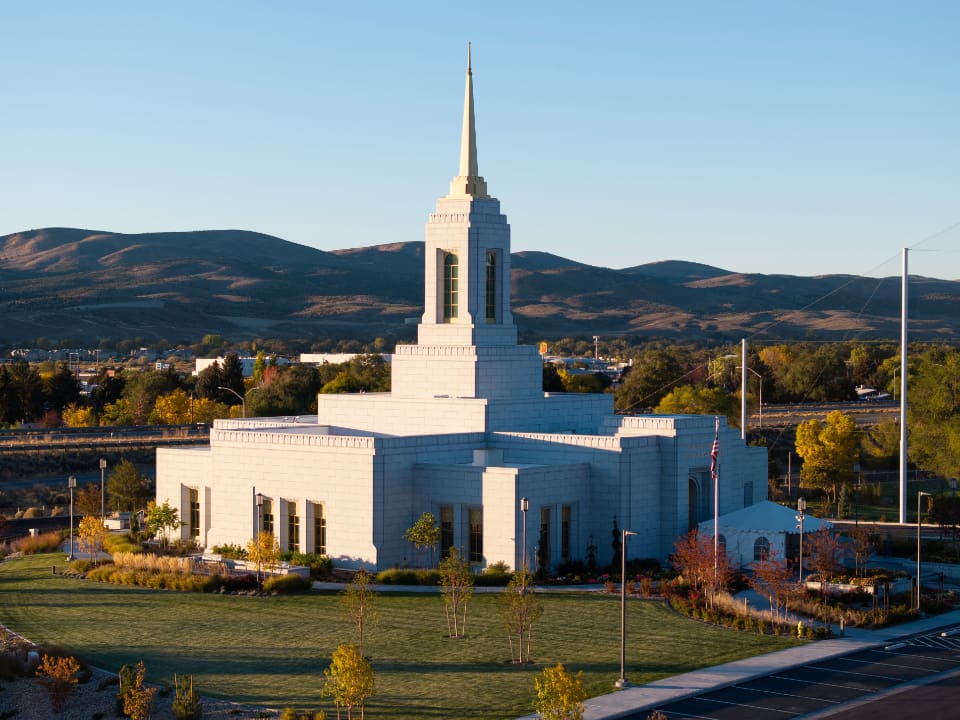
“The small group of Latter-day Saints who participated in the organization of the first branch in Elko likely never imagined 100 years later a temple would be announced and dedicated,” he said.
The Elko temple district now includes towns and communities in six large counties, covering nearly half of the state of Nevada. The temple will serve almost 12,000 members and 36 wards in the Elko area.
Elko Nevada East Stake President Mathew N. Spieth said, “We are especially excited that the rising generation will be able to make the house of the Lord their own personal sanctuary,” he said. “It already feels like home.”
Elko Nevada West Stake President Alberto Jimenez said, “The influence felt by the presence of the house of the Lord has already produced and will continue to generate profound and inspiring experiences.”
Elder Stevenson was accompanied at the dedication by his wife, Lesa; Elder Michael A. Dunn, a General Authority Seventy and First Counselor in the United States Southwest Area Presidency, and his wife, Linda; Elder James R. Rasband, a General Authority Seventy and Assistant Executive Director of the Temple Department, and his wife, Mary; and Bishop L. Todd Budge of the Presiding Bishopric and his wife, Lori.
The late President Russell M. Nelson announced a house of the Lord for Elko, Nevada, on April 4, 2021, during the April 2021 general conference. It was one of 20 temples announced at the conference. The open house ran Saturday, August 30, through Saturday, September 13 (excluding Sundays).
The Elko Nevada Temple is one of the Church’s 382 temples around the world that are operating, announced or under construction. It is Nevada’s third operating temple, following the Las Vegas Nevada Temple, which was dedicated in December 1989. The Reno Nevada Temple was dedicated in April 2000. A fourth temple, the Lone Mountain Nevada Temple, was announced in October 2022, and ground was broken on September 25.
To visit the Church Newsroom website, CLICK HERE.
Come Follow Me Podcast #41–Far West: A Trial by Fire, Doctrine and Covenants Section 115-120
Scot
I stand in Far West, a rather obscure place in northern Missouri, and as far as I can see, where once there was a bustling community of Latter-day Saints with homes, shops and a school, there are only empty fields. What happened to the people who once were here and why is only silence left behind? How could it possibly be that a sitting governor could order an extermination order on a group of people? Here in America? Unthinkable. It’s a human, heart-breaking story that gives us context for today’s lesson.
Maurine
Hello and welcome to Meridian Magazine’s Come Follow Me podcast where today we are studying Doctrine and Covenants Sections 115-120 and the story of the Latter-day Saints who were warred upon in Far West. Before we launch in, Meridian’s 2026 Come Follow Me calendars on the Old Testament have just arrived and now is the time to get them for your home and for your friends for Christmas. Some people have bought as many as 45 Come Follow Me calendars—because they are the perfect gift for your Latter-day Saint friends and neighbors—those you serve with, minister to, your children who have their own families. Scot’s stunning photography of the Old Testament sites immerses you into this ancient world and week-by-week Come Follow Me assignments are featured. The places of the Old Testament are right there on the wall to inspire you. Someone just wrote, “I’m excited about this calendar. It’s so beautiful and genuinely makes me want to dig into the Old Testament.” Learn more about it at latterdaysaintmag.com/2026. That’s latterdaysaintmag.com/2026
Scot
When the Latter-day Saints were driven from Independence, Missouri at the end of 1833, they found temporary shelter in Clay County. “Though the citizens of Clay County were at first hospitable and kind to the Saints, it was not long before they began to feel that these spiritual refugees needed to find homes and work elsewhere. Citizens met in Clay, Ray, Clinton, and other counties, plotting to deprive the Saints of their rights and drive them from the counties.
“Finally, Alexander Doniphan, a state legislator and loyal friend to the Saints, introduced a bill for the creation of two small counties in the northern part of large Ray County, one to be a home for the Mormons. A buffer some six miles between the counties was created where no one would be allowed to settle. After being homeless for nearly three years, the Saints flowed into Caldwell and also Daviess counties by the thousands, seeking refuge and strength in the security of their numbers.
Maurine
“W. W. Phelps and John Whitmer located a site for a city in the northern prairie of Ray County, naming it Far West. Using money that had been collected from branches of the Church for ‘bleeding Zion,’ they purchased land for a town site.
“The Lord told Joseph in Far West [in Section 115] ‘that the gathering together upon the land of Zion, and upon her stakes, may be for a defense, and for a refuge from the storm, and from wrath. . . . Let the city, Far West, be a holy and consecrated land unto me. . . . It is my will that the city . . . should be built up speedily by the gathering of my saints.’ (D&C 115:6-7, 17.)
Scot
“The plat for the city of Far West was a pattern for Zion, given to the Saints by the Prophet Joseph Smith. It was laid out with one square mile of land, with streets aligned to the compass, running north and south, east and west, and forming 3.6-acre blocks. A temple would be built in the center of the city, and all the locations in the town would be measured by their distance away from this central block.
“What had once been a lonely prairie, where the winds blew through the grasses, became almost overnight a bustling community. As persecutions increased in Ohio, Kirtland Saints streamed in. Homeless Missouri Saints came looking for stability, and in March 1838, Joseph and six-months-pregnant Emma joined the members thronging to Far West.
“’Joseph’s presence was a solace and a sustaining power to the Saints. He animated them by the courage of his presence and taught them patience by his own tenacity and endurance,’ said George Q. Cannon. ‘He was not there as a warrior; he did not bear arms; and yet he was a tower of strength to his people.’
Maurine
“This was a time for the Saints, with unflinching spirit, to begin again, plowing fields and laying cornerstones, establishing other settlements at Haun’s Mill and DeWitt.
“Caldwell County in 1836 was a wilderness. By the spring of 1838 the population was more than 5,000 of which more than 4,900 were Latter-day Saints with the greater concentration at Far West which by this time had 150 houses, four dry goods stores, three family groceries, half-a-dozen blacksmith shops, a printing establishment and two hotels. A large and comfortable schoolhouse had been built in 1836 and served also as a church and courthouse.
Scot
“Having lost the temple in Kirtland, Joseph had uppermost in his mind the goal of building another temple. Upon the Lord’s command, cornerstones were laid July 4, 1838, with great fanfare and hope.” (Scot Facer Proctor, Maurine Jensen Proctor, Witness of the Light, A Photographic Journey in the Footsteps of the American Prophet, Joseph Smith, Salt Lake City: Deseret Book).
“During the few untroubled days at Far West, important revelations were given to the young Church. The law of tithing was reintroduced from the ancient times, which was a giving of one-tenth of one’s increase (income) annually to the Lord.
Maurine
Anciently the Lord had said, Will a man rob God? Yet ye have robbed me. But ye say: Wherein have we robbed thee? In tithes and offerings…Prove me now herewith, saith the Lord of Hosts, if I will not open you the windows of heaven, and pour you out a blessing that there shall not be room enough to receive it” (3 Ne. 24:8,10).
We’ve heard this often, and Elder Bednar, gives us a unique view. “The imagery of the ‘windows’ of heaven used by Malachi is most instructive. Windows allow natural light to enter into a building. In like manner, spiritual illumination and perspective are poured out through the windows of heaven and into our lives as we honor the law of tithing.”
Scot
The blessings, Elder Bednar notes are often subtle, but significant. “We may need and pray for help to find suitable employment. Eyes and ears of faith (see Ether 12:19) are needed, however, to recognize the spiritual gift of enhanced discernment that can empower us to identify job opportunities that many other people might overlook—or the blessing of greater personal determination to search harder and longer for a position than other people may be able or willing to do. We might want and expect a job offer, but the blessing that comes to us through heavenly windows may be greater capacity to act and change our own circumstances rather than expecting our circumstances to be changed by someone or something else.
Maurine
“We may appropriately desire and work to receive a pay raise in our employment to better provide the necessities of life. Eyes and ears of faith are required, however, to notice in us an increased spiritual and temporal capacity (see Luke 2:52) to do more with less, a keener ability to prioritize and simplify, and an enhanced ability to take proper care of the material possessions we already have acquired. We might want and expect a larger paycheck, but the blessing that comes to us through heavenly windows may be greater capacity to change our own circumstances rather than expecting our circumstances to be changed by someone or something else.” (David A. Bednar, Windows of Heaven, https://www.churchofjesuschrist.org/study/general-conference/2013/10/the-windows-of-heaven?lang=eng
Scot
We pay our tithing sometimes from scanty means, not because we are expecting a check to compensate us for our offering, but because it is our way of expressing that we are God’s people and He is our God. It is our privilege to pay tithing, and the detailed discipline and revelation that follows is priceless. We can be assured, that at least in this commandment, we can do it with exactness. It is a foundational security. We are giving to the Lord, what is already His, since He is the creator of the whole earth and everything in it.
Elder Ronald E. Poelman said, “May tithing be regarded as a sacrifice? Yes, particularly if we understand the meaning of the two Latin words from which the English word sacrifice is derived. These two words, sacer and facere, taken together mean ‘to make sacred.’ That which we return to the Lord as tithing is indeed made sacred, and the obedient are edified.
“Much earlier, the Lord emphasized the sacredness of tithing to Moses in these words, recorded in the book of Leviticus: “And all the tithe of the land … is the Lord’s: it is holy unto the Lord” (Lev. 27:30).
Maurine
Once in a while, the subtle blessings of paying tithing do become obvious. Elder Poelman said, “As a young married couple, my wife and I were expecting the birth of our first child. I was studying law at the university and working nights in a gasoline station. We had very little money. We had furnished our small basement apartment with some used furniture and many wooden boxes.
“As the time of the birth approached, we had assembled everything we would need, except we had no bed for the baby and no money to buy one.
“It was our practice at that time to pay our tithing each month on fast Sunday. As that day approached, we discussed the possibility of postponing the paying of our tithing so that we could make an initial payment on a baby bed. In the spirit of the fast, and after praying, we decided to pay the tithing and trust our Heavenly Father.
Scot
“A few days later, I was walking in the business district of the city and unexpectedly met my former mission president, who asked if I was in school or working at a job. I replied that I was doing both.
“Was I married? ‘Yes!’
“’Did we have children? ‘No, but our first child will be born in just a few weeks.’
Maurine
“’Do you have a bed for the baby?” he asked. “’No,’” I replied reluctantly, startled by the direct question.
“’Well,’” he said, “’I am now in the furniture business, and it would please me to have a baby bed delivered to your apartment as a gift.’”
“A great feeling of relief, gratitude, and testimony came over me.
“The gift filled a temporal need but is still a poignant reminder of the spiritual experience that accompanied it, confirming again that the law of tithing is a commandment with a promise.” (Ronald E. Poelman, Tithing: A Privlege, https://www.churchofjesuschrist.org/study/general-conference/1998/04/tithing-a-privilege?lang=eng)
Scot
In the early decades of the Church, leaders continued to affirm that tithing was a commandment and obligation. In 1882, tithing payment became a requirement for temple attendance. Finally, in May of 1899, Lorenzo Snow, the fifth president of the Church was worried about the debt and steep financial obligations of the Church. He prayed and did not receive an immediate answer but he did receive a prompting that he should visit the towns in southern Utah where there had been a terrible drought as it hadn’t rained in months. As he traveled south, President Snow saw the thirsty plants and animals, the arid ground that could not grow the crops necessary to feed the people.
Maurine
Then at a stake conference in St. George, Utah, he paused as he spoke. “The room was still as everyone waited for him to speak. When he started talking again, his voice was strong, and the people could tell that he was speaking under the inspiration of the Lord. He said, ‘The word of the Lord is: The time has now come for every Latter-day Saint … to do the will of the Lord and to pay his tithing in full. That is the word of the Lord to you, and it will be the word of the Lord to every settlement throughout the land of Zion’. (quoted in LeRoi C. Snow, “The Lord’s Way Out of Bondage,” p. 439) He told the Saints that the Lord was displeased with them because they had not been paying their tithing and he promised them that if they paid their tithing, rain would begin to fall and their crops would grow.
Scot
As he traveled back to Salt Lake City, he stopped at many settlements to preach the law of tithing. He told the Church: “The poorest of the poor can pay tithing; the Lord requires it at our hands. … Everybody should pay tithing. … The law shall be observed. … And we shall pay our debts. … God bless you” (quoted in Carter E. Grant, The Kingdom of God Restored, p. 546).
The part of this story that we don’t usually hear is that it rained as the Lord promised—but it didn’t come for two months! It is not as if the rain began gushing and the rows filled with water as people turned in their first tithes. They had to act on great faith and we may find this in our lives. Blessings, even vital ones, may not come in our time or in our way, but we can trust if we obey the law, the windows of heaven will be opened to us. The strict adherence to this sacred law, first given in Far West in this dispensation would later free the debt-laden Church from all encumbrances of the world, but Joseph would not live to see that day.
Maurine
Another vital revelation given in Far West was the official name of the Church.
“For thus shall my church be called in the last days, even The Church of Jesus Christ of Latter-day Saints.” (D&C 115:4.) At the time of the ministry of the Savior upon the earth, too, his church was called after his name, with members referred to as “Saints.”
Who names something defines it. And the Lord did. It is not inconsequential that over the years we slid into calling ourselves Mormons, a name that enemies of the Church had once given us derisively. When President Russell M. Nelson announced a course correction for the Church, he said, “I did this because the Lord impressed upon my mind the importance of the name He decreed for His Church, even The Church of Jesus Christ of Latter-day Saints.”
Scot
He said, “As you would expect, responses to this statement and to the revised style guide have been mixed. Many members immediately corrected the name of the Church on their blogs and social media pages. Others wondered why, with all that’s going on in the world, it was necessary to emphasize something so ‘inconsequential.’ And some said it couldn’t be done, so why even try? Let me explain why we care so deeply about this issue. But first let me state what this effort is not:
- It is not a name change.
- It is not rebranding.
- It is not cosmetic.
- It is not a whim.
- And it is not inconsequential.”
(President Russell M. Nelson The Correct Name of the Church, https://www.churchofjesuschrist.org/study/general-conference/2018/10/the-correct-name-of-the-church?lang=eng).
It is so consequential.
When the Savior visited the Americas, He said, “Ye shall call the church in my name…And how be it my church save it be called in my name? For if a church be called in Moses’ name then it be Moses’ church; or if it be called in the name of a man then it be the church of a man; but if it be called in my name then it is my church, if it so be that they are built upon my gospel” (3 Nephi 27:8.).
Maurine
When President Nelson asked us to use the correct name of the Church, people said it was impossible and awkward. How can you rebrand something like the Mormon Tabernacle Choir, when that name has been used on air since 1929? What do you do about your websites and missionary efforts that have all been branded “Mormon”? For me, it is so grounding to know that the Lord cares what His church is called and no other consideration is as important. Early on, we gave Meridian Magazine, the url ldsmag.com, so it could be simple for people, but we didn’t have to think twice about changing the url to latterdaysaintmag.com to align ourselves with what the Lord said His church should be called.
Scot
Now we return to the story of the tragedy of Far West, which is important to understand, because it profoundly marked the sensibilities of the Latter-day Saints and Joseph Smith in the years that followed.
“While Joseph was laying out this city, apostasy began to rage within the ranks of the Church. Jealousies, pride, and insurrections overcame some of the most powerful leaders of the Church, including David Whitmer, Oliver Cowdery, W. W. Phelps, Luke Johnson, and others, some of whom had been charged with using Church funds to obtain personal profit. [Some of them had used the Church’s funds to buy personal property.] Joseph’s heart broke to see many of these once-loyal friends turn against him and the Church, to see them excommunicated. Joseph’s life now was nearly always in danger from without and within the Church.” (See Proctor, Witness)
William Phelps, who had written “The Spirit of God like a Fire is Burning” for the dedication of the Kirtland Temple” and had the printing press that was destroyed in Independence turned against the Church.
Maurine
“Affidavits and letters that apostate William Phelps had written led to much suffering and hardship for the Saints in Far West. When he later came back repentant, desiring to have full fellowship again with the Saints, Joseph wrote to him with compassion and charity: “It is true, that we have suffered much in consequence of your behavior—the cup of gall, already full enough for mortals to drink, was indeed filled to overflowing when you turned against us. One with whom we had oft taken sweet counsel together, and enjoyed many refreshing seasons from the Lord—’had it been an enemy, we could have borne it. . . . ‘
“’However, the cup has been drunk, the will of our Father has been done. . . . I shall be happy once again to give you the right hand of fellowship, and rejoice in the returning prodigal. . . .
‘Come on, dear brother, since the war is past, For friends at first, are friends again at last.’ William Phelps ever remembered the kindness and loving forgiveness of the Prophet and the Lord.
Scot
As the Saints began to assemble in Far West, “the war clouds began again to lower with dark and threatening aspect,” recorded Parley P. Pratt. “Those who had combined against the laws in the adjoining counties, had long watched our increasing power and prosperity with jealousy, and with greedy and avaricious eyes. It was a common boast that, as soon as we had completed our extensive improvements, and made a plentiful crop, they would drive us from the state, and once more enrich themselves with the spoils.”
One day the Prophet was at his parents’ home writing letters. “While he was thus engaged,” his mother recorded, “I beheld a large company of armed men advancing . . . eight of them came into the house. . . . ‘We have come here to kill Joe Smith and all the “Mormons.”‘ . . . ‘I suppose,’ said I, ‘you intend to kill me, with the rest?’ ‘Yes, we do,’ returned the officer. ‘Very well,’ I continued, ‘I want you to act the gentleman about it, and do the job quick. Just shoot me down at once, then I shall be at rest; but I should not like to be murdered by inches.’ ‘There it is again,’ said he. ‘You tell a “Mormon” that you will kill him, and they will always tell you, “that is nothing—if you kill us, we shall be happy.”‘
“Joseph, just at that moment finished his letter, and, seeing that he was at liberty, I said, ‘Gentlemen, suffer me to make you acquainted with Joseph Smith, the Prophet.’ They stared at him as if he were a spectre. He smiled, and stepping towards them, gave each of them his hand, in a manner which convinced them that he was neither a guilty criminal nor yet a hypocrite.” Joseph spoke to them at length about the things the Saints had suffered and then “he said, ‘Mother, I believe I will go home now—Emma will be expecting me.’ At this two of the men sprang to their feet, and declared that he should not go alone, as it would be unsafe—that they would go with him, in order to protect him.” At the doorway, Lucy heard the conversation of the remaining guards about Joseph: “Did you not feel strangely when Smith took you by the hand? I never felt so in my life.” “I could not move. I would not harm a hair of that man’s head for the whole world.” “This is the last time you will catch me coming to kill Joe Smith, or the ‘Mormons’ either.”
Maurine
“To the great chagrin of the Saints, however, their avowed enemy in Jackson County, Lilburn W. Boggs, was elected governor of the state. In “Diahman” (short for Adam-ondi-Ahman), the members of the Church wanted to be sure that they elected their own representative to serve in state government. Local resident William Peniston was a staunch foe of the Saints and desired to be elected against a far greater ratio of Mormons to non-Mormons.
“The day of the election arrived, August 6, 1838, and Peniston addressed a crowd of voters in Gallatin (four miles south of Diahman), which at that time was a small row of ‘ten houses, three of which were saloons.’ Hoping to excite the crowd against the Mormons, he shouted, ‘The Mormon leaders are a set of horse thieves, liars, counterfeiters, and you know they profess to heal the sick, and cast out devils, and you all know that is a lie.’ With this kind of a speech, emotions ran high, and Dick Welding, a mob bully, punched one of the Saints to the ground. A fight broke out on all sides, with Mormon John Butler grabbing an oak stake from a woodpile and striking Missourians to the ground. Many people on both sides were seriously injured. Though few Mormons braved voting that day, Peniston still lost the election.
Scot
“After the election-day incident, relations between the Latter-day Saints and their anti-Mormon neighbors deteriorated rapidly. The Prophet tried to calm the hostility that had arisen in the area, visiting Adam Black, the newly elected judge for Daviess County, and pleading with him to sign an agreement of peace.
“It was a worthless scrap of paper whose promise lasted less than twenty-four hours. Distorted stories spread like a prairie fire, further enflaming the mob spirit. ‘Smith has organized an army of five hundred men to exterminate the old settlers,’ they said.
“Smoldering emotions turned to violence against the Saints. Hyrum Smith testified in an affidavit that several Mormons were whipped and that their bodies were lacerated with hickory withes, as well as being tied to trees and deprived of food. Joseph noted families scattered from their homes and said, ‘My feelings were such as I cannot describe when I saw them flock into the village, almost entirely destitute of clothes.’”
“When the Saints appealed to Governor Boggs for relief, he said, ‘The quarrel was between the Mormons and the mob,’ and that they ‘might fight it out.’
Maurine
“Emboldened by the governor’s apathy, a mass of anti-Mormon forces marched on Caldwell and Daviess counties to force the Mormons out.
“As dawn approached on October 25, 1838, the militia from Far West engaged in battle at Crooked River, and three of the Mormons, including David W. Patten of the Council of the Twelve, were killed. The clash gave Boggs, a longtime enemy of the Saints, the excuse he had been waiting for. He claimed that the Saints had initiated hostilities, therefore, he wrote by executive order, ‘The Mormons must be treated as enemies and must be exterminated or driven from the state, if necessary for the public good.’
“Parley P. Pratt complained of the order: ‘It said nothing of criminals; it made no allusion to punishing crime and protecting innocence; it was sufficient to be called a “Mormon.” A peaceable family just emigrating, or passing through the country; a missionary going or coming on his peaceable errand of mercy; an aged soldier of the American revolution on his death bed . . . a widow with her babes; the tender wife, or helpless orphan; all were included in this order of wholesale extermination or banishment.’
Scot
“Extermination began, just three days after the governor’s order, at Haun’s Mill, a small settlement, where at 4:00 P.M. children were playing on either side of the creek and mothers were involved in domestic duties. Suddenly the sound of one hundred rifles crashed through the air as the mob shot mercilessly at everything in sight. Amanda Barnes Smith and her daughters saved their lives by running to the woods with bullets whistling by ‘like hailstones.’ But when she crept back to the mill, she saw her husband and ten-year-old son ‘lifeless upon the ground.’ Then she found another son shot in the head under the blacksmith’s bellows where he had attempted to hide. Nineteen people were massacred.”
Can you imagine the hard-heartedness of someone who would point guns through the trees and turn them on peaceful families going about their every day work on a sunny afternoon?
Maurine
On October 31, 1838, the anti-Mormon, official state militia, numbering up to three thousand gathered around Far West, ready to attack. Now, we have our own Benedict Arnold, a Latter-day Saint by the name of George M. Hinckle who was a colonel of the Mormon-controlled Caldwell County Militia. He made a secret deal with Commanding General Lucas of the state militia to turn over Joseph Smith for trial and punishment.
He also agreed that Mormon property would be confiscated for damages and that the Saints would surrender their arms and leave the state.
Scot
“In Far West, [the traitor] Hinckle told Joseph, Sidney Rigdon, Parley Pratt, and others, that Lucas wanted a peace conference with them. When they met together, however, Lucas instantly ordered his guard to surround the Mormon leaders. Whooping and yelling like bloodhounds let loose upon their prey, they swore oaths and mocked the men throughout the night: ‘Come, Mr. Smith, show us an angel. Give us one of your revelations. Show us a miracle!’” Their intent was to murder them without trial the next morning.
“Parley Pratt wrote, ‘No pen need undertake to describe our feelings during that terrible night, while there confined—not knowing the fate of our wives and children, or of our fellow Saints, and seeing no way for our lives to be saved except by the miraculous power of God. But, notwithstanding all earthly hopes were gone, still we felt a calmness indescribable. A secret whispering to our inmost soul seemed to say: ‘Peace, my sons, be of good cheer, your work is not yet done; therefore I will restrain your enemies, that they shall not have power to take your lives.’’
Maurine
Lucy Mack Smith wrote of her experience that night: “At the time when Joseph went into the enemy’s camp, Mr. Smith and myself stood in the door of the house in which we were then living, and could distinctly hear their horrid yellings. Not knowing the cause, we supposed they were murdering him. Soon after the screaming commenced, five or six guns were discharged. At this Mr. Smith, folding his arms tight over his breast and grasping his sides, cried, groaning with mental agony, ‘Oh, my God! my God! they have murdered my son and I must die, for I cannot live without him!’
“I was unable to answer him. In all our other troubles I had been able to speak a word of consolation to him, but now I could do nothing but mingle my cries and groans with his. Still, the shrieking and screaming continued. No tongue can ever express the sound that was conveyed to our ears nor the sensations that were produced in our hearts. It was like the screeching of a hundred owls mingled with the howling of an army of bloodhounds and the screaming of a thousand panthers all famishing for the prey which was being torn piecemeal among them.
“My husband was immediately taken sick and never regained his health afterwards, although he lived two more years.” (Lucy Mack Smith, author; Scot Facer Proctor, Maurine Proctor, editors. The Revised and Enhanced History of Joseph Smith by His Mother; Salt Lake City: Deseret Book).
Scot
General Alexander Doniphan received an order from his superior, General Lucas, to execute the prisoners the next morning in the public square, he saved their lives, saying, “It is cold-blooded murder. I will not obey your order. My brigade shall march for Liberty tomorrow morning, at 8 o’clock; and if you execute these men, I will hold you responsible before an earthly tribunal, so help me God.”
General Doniphan saved Joseph, Hyrum and the other church leaders with his refusal to shoot them, but as they left the next morning, they knew their lives were in great danger.
Maurine
Lucy said, “When our sons were to be taken away, a messenger came and told us that if we ever were to see our sons alive again, we would have to go immediately to them, as they were in the wagon to be driven to Independence and would be gone in a few minutes. My husband was then too ill to be able to go, but Lucy and I started alone, for we were the only well ones of the family.
Lucy said, “When we came within about four hundred yards of the wagon, we could go no farther because they were surrounded by men.‘I am the mother of the Prophet, I cried, ‘and is there not a gentleman here who will assist me through this crowd to that wagon that I may take a last look at my children and speak to them once more before they die?’ One individual volunteered to make a pathway through the army, and we went on through the midst of swords, muskets, pistols, and bayonets, threatened with death at every step, until at last we arrived at the wagon. The man who accompanied me spoke to Hyrum, who was sitting in the front, and told him his mother was there and wished him to reach his hand to her. He did so, but I was not permitted to see him, for the cover of the wagon was made of very heavy cloth and tied closely down in front and nailed fast at the sides.
We merely shook hands with him and the other prisoners who sat in the forepart of the wagon, before several of the men in the mob exclaimed, ‘Drive over them,’ calling to us to get out of the way, swearing at us and threatening us in the most dreadful manner.
Scot
Lucy continued, “Our friend then conducted us to the hinder part of the wagon where Joseph was, and said, ‘Mr. Smith, your mother and sister are here and wish to shake hands with you.’ Joseph crowded his hand through between the wagon and cover where it was nailed down to the end board. We caught hold of his hand, but he did not speak to us. I could not bear to leave him without hearing his voice. Oh, Joseph, said I. ‘Do speak to your poor mother once more. I cannot go until I hear you speak.’
“’God bless you, Mother,’ he sobbed out. Then a cry was raised and the wagon dashed off, tearing my son from us just as Lucy was pressing his hand to her lips to bestow upon it a sister’s last kiss-for we knew that they were sentenced to be shot.”
Maurine
Lucy said, “We succeeded in getting to the house again, although we were scarcely able to support ourselves…
“My son-in-law Mr. McLeary went out with some others to meet the mob and ascertain what their business was. They gave the messengers to understand that they would soon commence an indiscriminate butchery of men, women, and children, that their orders were to convert Far West into a human slaughter pen and never quit it while there was a lisping babe or a decrepit old woman breathing within its bounds.
“The people were all driven in from the country, and there was more than an acre of land in front of our house completely covered with beds, lying in the open sun, where men, women, and children were compelled to sleep in all weather. These were the last who had got into the city, and the houses were so full that there was no room for them. It was enough to make the heart ache to see children in the open sun and wind, sick with colds and very hungry, crying around their mothers for food and their parents destitute of the means of making them comfortable, while their houses, which lay a short distance from the city, were pillaged of everything, their fields thrown open for the horses belonging to the mob to lay waste and destroy, and their fat cattle shot down and turning to carrion before their eyes, while a strong guard, which was set over us for the purpose, prevented us from making use of a particle of the stock that was killed on every side of us.
Scot
She continued, “Soon after this the brethren were compelled to lay down their arms and sign away their property. It was done immediately in front of our house, and I could hear General Clark’s speech distinctly in which he declared that my sons must die, that ‘their die was cast, their doom was fixed, their fate was sealed, and also that if he could invoke the spirit of the unknown God to rest upon us, he would advise us to scatter abroad.” (Lucy Mack Smith, Revised).
Maurine
“For some, the flight from Missouri was evidence that the Lord had forsaken the Saints. They had lost their property and had suffered sorely. Their Prophet was jailed, with no prospect for relief. Their dreams of the promised Zion as the center place were indefinitely postponed.
“In fact, the enemies of the Church must have been sure it had been successfully destroyed, once and for all.
“For the less steady, Missouri had been a time of sifting. John Corrill was one who had once thrown himself wholeheartedly into the cause. He had not whimpered at the expulsion from Jackson County; he had offered to be whipped or die for the gospel; he had wandered homeless into Clay County; he had stood by the Prophet in all things—and now it was enough. He had lost his faith in Joseph Smith. He wrote, ‘Calculation after calculation has failed, plan after plan has been overthrown, and our prophet seemed not to know the event till too late. If he said, ‘Go up and prosper,’ still we did not prosper, but have labored and toiled, and waded through trials, difficulties, and temptations, of various kinds, in hope of deliverance. But no deliverance came.’
Scot
“Others, however, did not give up. In the face of great adversity, they grew in faith and courage. Eliza R. Snow, struggling out of Adam-ondi-Ahman in the dead of winter, was taunted by a militiaman, “Well, I think this will cure you of your faith.” Looking him square in the eye, she replied, “No, sir, it will take more than this to cure me of my faith.” Then she, with twelve thousand others who felt the same way, trudged eastward to the Mississippi River. (Proctor and Proctor, Witness).
Maurine
That’s all for today. Don’t forget that the new Come Follow Me calendars that feature Scot’s stunning photography of Old Testament sites is now available. See samples of it at latterdaysaintmag.com/2022. That’s latterdaysaintmag.com/2022
Next week we’ll study Doctrine and Covenants 121-123 in a lesson called, “O God, Where Art Thou?” Thanks to Paul Cardall for the music and to our daughter, Michaela Proctor Hutchins who produces this show.
Mental Health Minute: Smiling Faces and Grateful Hearts
In his talk in General Conference, Elder Carlos Godoy of the Seventy repeated the phrase “smiling faces and grateful hearts.” My wife and I had the opportunity to serve twice in Accra, Ghana. The second time we were blessed to serve at the Ghana MTC and for a brief time at the MTC in Kinshasa, DR Congo. We were always uplifted by the smiling faces and grateful hearts of those young missionaries. We were also touched by the smiling faces and grateful hearts of the members, the MTC teachers and staff, and the mission leaders who touched our lives.
Having these experiences does not mean that they were problem-free. We have been taught that our lives are not meant to be problem-free. But isn’t it how we approach the problems that gives us the ability to have smiling faces and grateful hearts? In John 16:33, (one of my favorite scriptures), the Lord says: “These things I have spoken unto you, that in me ye might have peace. In the world ye shall have tribulation: but be of good cheer; I have overcome the world.”
We often read the first part of the Book of Mormon when Nephi gratefully and faithfully accepts the responsibilities and challenges of what the Lord commands. “And it came to pass that I, Nephi, said unto my father: I will go and do the things which the Lord hath commanded, for I know that the Lord giveth no commandments unto the children of men, save he shall prepare a way for them that they may accomplish the thing which he commandeth them” (1 Nephi 3: 7). By contrast, his brothers Laman and Lemuel always complained or as the scriptures call it, they “murmured.” Here is the lesson for us: to remember to be grateful and have smiling faces even in the face of adversity, challenges, and opposition in all things. At least three times during general conference, we heard the quote from our beloved prophet, President Russell M. Nelson: “… Saints can be happy under every circumstance. We can feel joy even while having a bad day, a bad week, or even a bad year! … the joy we feel has little to do with the circumstances of our lives and everything to do with the focus of our lives. When the focus of our lives is on God’s plan of salvation … and Jesus Christ and His gospel, we can feel joy regardless of what is happening—or not happening—in our lives. Joy comes from and because of Him. He is the source of all joy.” (Russell M. Nelson, Joy and Spiritual Survival, General Conference, October 2016).
Many of the young missionaries in Africa came from homes where they lived in very humble circumstances. Some came with only one or two white shirts and a well-worn, ill-fitting pair of shoes they inherited from an older brother. Nevertheless, they found joy in the restored gospel of Jesus Christ and came to serve with smiling faces and grateful hearts.
Personally, I believe that it doesn’t take much talent to murmur, criticize, or complain. And it only takes a slight attitude adjustment to have smiling faces and happy hearts.
Adjusting to Missionary Life provides the following suggestions and tools to help us make that attitude adjustment:
- Recognize the hand of the Lord in all things. You have a front row seat to the greatest miracle of all: the effect of Christ’s Atonement on individuals and families. Practice focusing every day on the blessings you are grateful for. Notice the Spirit’s influence in your life, and write about it. (See Moroni 10:3.)
- Focus on the needs of those you are serving. Think about what you can do to bless those around you. Seek inspiration on how you can serve them and strengthen their faith.
- Sing. Memorize the words to a few of your favorite hymns. When you are feeling stressed or discouraged, sing to yourself or with your companion. “Hymns can lift our spirits, give us courage, and move us to righteous action. They can fill our souls with heavenly thoughts and bring us a spirit of peace” (“First Presidency Preface,” Hymns [1985], x).
- Serve from your strengths. Make a list of your strengths, talents, and spiritual gifts. Your strengths are part of the Lord’s storehouse, from which He draws to bless His children and build His kingdom. A crucial part of your life’s mission is to cultivate your gifts and consecrate your strengths to help others come to Christ. Focus more on what you do well than on what you do wrong. Plan ways each week to develop and use your gifts to serve and bless others (see D&C 82:18–19).
In his talk “Be of Good Cheer” (General Conference, October 2020), President Dallin H. Oaks said the following:
“The Prophet Joseph Smith was taught that “the works, and the designs, and the purposes of God cannot be frustrated, neither can they come to naught” (Doctrine and Covenants 3:1). To His struggling children, the Lord gave these great assurances:
“Behold, this is the promise of the Lord unto you, O ye my servants.
“Wherefore, be of good cheer, and do not fear, for I the Lord am with you, and will stand by you; and ye shall bear record of me, even Jesus Christ, that I am the Son of the living God” (Doctrine and Covenants 68:5–6).
The Lord stands near us, and He has said:
“What I say unto one I say unto all, be of good cheer, little children; for I am in your midst, and I have not forsaken you” (Doctrine and Covenants 61:36).
May the Lord bless us to feel His love, be of good cheer, and have smiling faces and happy hearts as we serve in the ongoing restoration of the gospel of Jesus Christ.
“Brother Nelson” Was My Dad’s Priest Quorum Advisor
I knew President Nelson on another level.
Heard stories in my home about him before he was even an Apostle.
Stories told to me by my dad.
“Brother Nelson” was my dad’s priest quorum advisor.
A youth leader who took special interest in my dad when he was a simple teenager trying to figure out life.
Brother Nelson noticed my dad at the ski resort one day after a good run down the powdery slopes.
My dad only had enough coins to pay for one run on his wooden skies, so at the bottom of the hill he bent down to take his skies off.
Suddenly, he heard his name.
“Clark! Hey, it’s great to see you! How about I pay for a few more runs and let’s ski together.”
It was a day never to be forgotten.
A day when a busy heart surgeon found a sliver of time to likely ski a few quick runs by himself.
But in his busy schedule, he noticed the one.
Took a small opportunity to make a big difference.
Years later, when “Elder Nelson” was announced as a new Apostle, my dad gathered us kids together and again retold the story of the day on the slopes.
In our family, we all knew what kind of a heart and soul Russell M. Nelson had before most of the world did.
How he not only inspired millions, but also noticed and cared for the individual.
The kind of man who let my dad know he mattered.
So, when “President Nelson” was named a Prophet, there was no doubt in our family that this man was on the Lord’s errand and God’s true mouthpiece.
Russell M. Nelson not only preached the gospel from the pulpit.
He practiced it.
The Ministry of President Russell M. Nelson: Global, Personal, Prophetic
I woke up today to the news that President Russell M. Nelson, a prophet of vigor and optimism, had passed away in the night. It felt like it couldn’t be true, because he had an energy that seemed like it would go on forever. But, while discussing the God-given power to heal, he himself declared:
Even though our Creator endowed us with this incredible power, He consigned a counterbalancing gift to our bodies. It is the blessing of aging, with visible reminders that we are mortal beings destined one day to leave this “frail existence.” Our bodies change every day. As we grow older, our broad chests and narrow waists have a tendency to trade places. We get wrinkles, lose color in our hair—even the hair itself —to remind us that we are mortal children of God, with a “manufacturer’s guarantee” that we shall not be stranded upon the earth forever.
His mortal ministry has come to an end, but he has left us with an example and crucial spiritual lessons that we can continue to use to improve our lives and embrace discipleship until our time on earth, too, comes to an end.
From the moment President Nelson was sustained as the prophet, his ministry was marked by a significant hastening of the work. Some may not remember now that it was his very first general conference after being sustained as the prophet that he announced the restructuring of priesthood quorums, the end of visiting/home teaching and the beginning of their new replacement; ministering.
“President Nelson, I don’t know how many more rushes we can handle this weekend,” then-Elder Jeffrey R. Holland of the Quorum of the Twelve quipped when his turn at the pulpit came. “Some of us have weak hearts. But as I think about it, you can take care of that, too. What a prophet.”
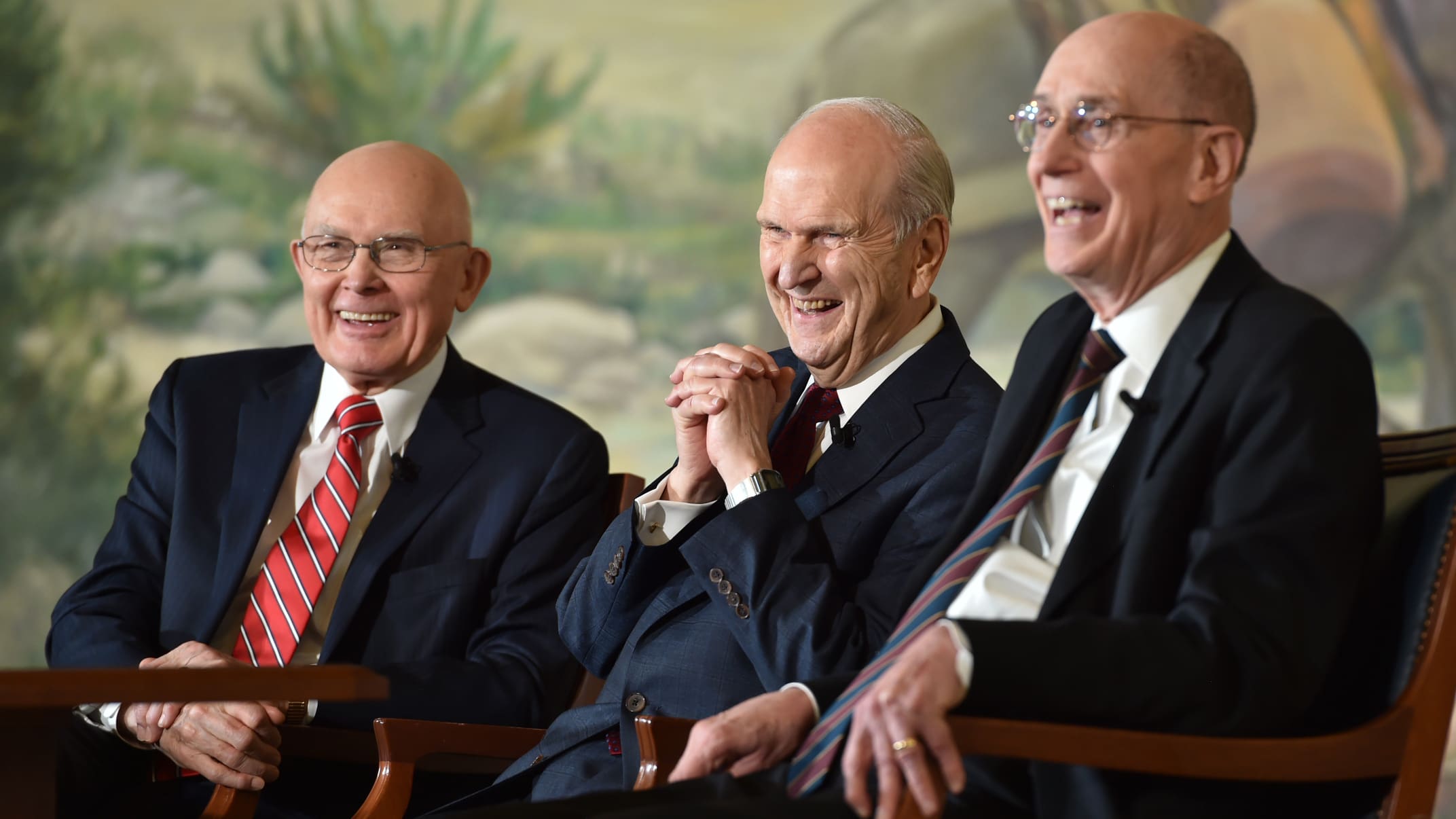
At the close of that meeting, President Nelson also announced seven new temples, including the first for India. Each conference that followed brought more temple announcements. I remember once hearing him say, “Today I am pleased to announce our plans to build a new temple…” and then he paused, and I thought, “oh, sounds like just one this time.” But he finished that sentence with, “…in each of the following locations.” He went on to announce 15.
When President Nelson became the prophet in January of 2018, there were 159 temples on the earth. He announced 200 more in the nearly 8 years of his service as the prophet.
Within the first two years of his ministry, President Nelson would also announce changes to the youth program, reduce the church time to two hours and introduce a home-centered, church supported approach to gospel instruction within the family.
It may not have been until March of 2020 and the declaration of COVID-19 as a global pandemic that people fully realized that the watchman on the tower was preparing for something none of us knew was coming. Churches were closed, but we were already prepared to learn at home. Visiting and home teaching with their formal visits were no longer possible, but ministering had already taken their place.
More than that, the prophet had been tutoring us in the importance of cultivating a personal relationship with the Savior (emphasized by a new Christ-centered church logo and an increased focus on using the correct name of the church). Each change instructed us to direct our discipleship through revelation and individualized guidance and to turn with ever more increasing devotion to Christ. There would be no more checking of boxes, while being a stranger to the spirit. We would have to do better. It was almost like departing from the Law of Moses for a second time.
But what will always stay with me about President Nelson is not the sweeping movements of the Church during his tenure, but the quiet, personal way he testified and shared in vulnerable ways.

In a video message about the healing power of gratitude, released in the fall of 2021, President Nelson shared a tender heartbreak as he told of the experience of losing his beloved wife of nearly 60 years. He said,
Nearly 16 years ago, my wife Dantzel and were sitting on the sofa, holding hands while we watched television. Suddenly, she collapsed. Despite being well trained to treat the very thing that ended her life, I could not save my own wife.
He went on to speak through tears of the two daughters he had lost to cancer and how no parent is prepared to lose a child. His message was one of gratitude’s power as a balm for such pains, but his honesty in revealing that that grief was still part of his experience filled his obvious optimism about life with so much more depth for me.
Only a few weeks later, I had a friend who was struggling with his faith say, “I just wish the Brethren would reveal a little more of their struggle” and I thought back to that video and how bitter President Nelson could’ve become to lose his beloved wife to something he knew how to treat, but he didn’t. I know my friend wanted to know that spiritual power isn’t just the happy result of never having to face any real challenges. And indeed, that message filled me with the assurance that it is as Paul says, ““…we glory in tribulations also: knowing that tribulation worketh patience; And patience, experience; and experience, hope” (Romans 5:3-4).

Russell M. Nelson and his wife, Dantzel, at the University of Utah in 1942.
President Nelson seemed to be hope personified, but it was not hope that was born of naivety, but hope born of experience, bitter and sweet, and a constant striving to align his life with the will of the Lord.
He was a prophet of the big picture, certainly, with the work hastening around the globe and the gathering of Israel becoming a more concrete concept for us all with each passing year, but he was powerfully gifted at the small picture too.
In a tribute written by Deseret news author Sarah Jane Weaver, she shared, “I was in Australia covering President Nelson’s global ministry when he walked in the room where members of the media team were unpacking their equipment. He said hello and then greeted everyone in the room by name. (Until that moment we didn’t even know he knew our names.) Then, as he was leaving, he turned and said that he had prayed for each of us that morning by name.”
As a member of the media myself, I am moved by that gesture of personalization. It was something he also extended to members around the world in his ministry that saw him visiting 32 countries and U.S. territories. His daughter reported that he was conversant in 11 languages, but as I have learned little details about how and why he learned them, I understand just how much that was in an effort to speak familiarly and closely with individuals across the world and not just to have a multilingual feather in his cap.
At 54, he hired a tutor to learn Mandarin Chinese. Why? Because he’d been in a meeting where President Kimball challenged all present to study the language to help open the doors of nations then closed to the gospel. He went right home and began, with Dantzel joining him. The very next year, he was invited to teach open-heart surgery in China as a visiting professor. 5 years after that (and only one year into his calling as an apostle), he received an urgent request to perform heart surgery on a Chinese opera singer who was considered a national hero. Though his full-time ecclesiastical position would’ve prevented him coming, he was given special permission to go ahead as a favor to the people of China.
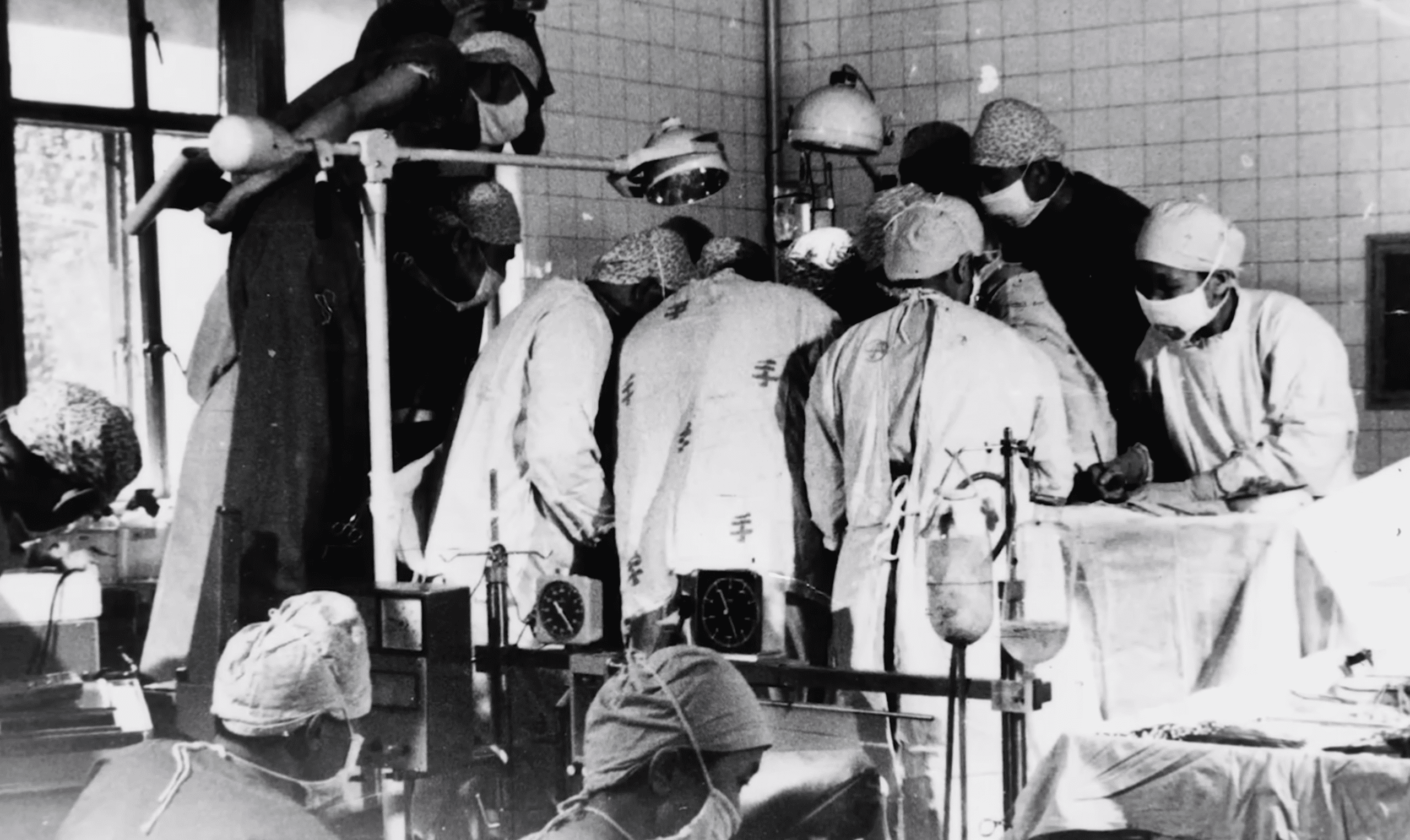
Thankfully, the operation was a success. It was the last open-heart surgery he ever performed, and he was able to converse with the medical staff involved, in their own language, because he had followed the prophet.
At 63, he hired a tutor so he could learn enough Dutch to lead the Hosanna shout for a temple dedication. At just shy of 94 years old, he stood before a congregation in the Dominican Republic and said, “Con su permiso, quisiera hablar en español” [“With your permission, I’d like to speak in Spanish”] and gave what is believed to be the first extended address in a non-English language a Church president has ever delivered.
But it wasn’t for the honor of being the first. It was so that the specific individuals in that room could know that the Lord loved them, in their own language. It was so that each person there could understand the words of the prophet as a mouthpiece of the Lord to them, without the intercession of a translator.
He was powerful in the big picture and powerful in the small picture.
He showed so much personal love, but was also bold in issuing calls to personal responsibility. He frequently concluded a meeting or a message with a challenge to a specific action for those listening.
He issued challenges for fasts from social media, regularly sharing our gratitude, increasing temple attendance, resolving personal conflict in our lives and striving to become peacemakers. He asked for constant striving because he was constantly striving, but also left members with so many prophetic promises if we would follow through.
Scot Facer Proctor collected a list of those remarkable promises that was published here on Meridian in honor of the prophet’s birthday just a couple of weeks ago. I encourage you to read through that list and renew your commitment to follow the guidance President Nelson offered, for we all need the promises that follow that diligence.
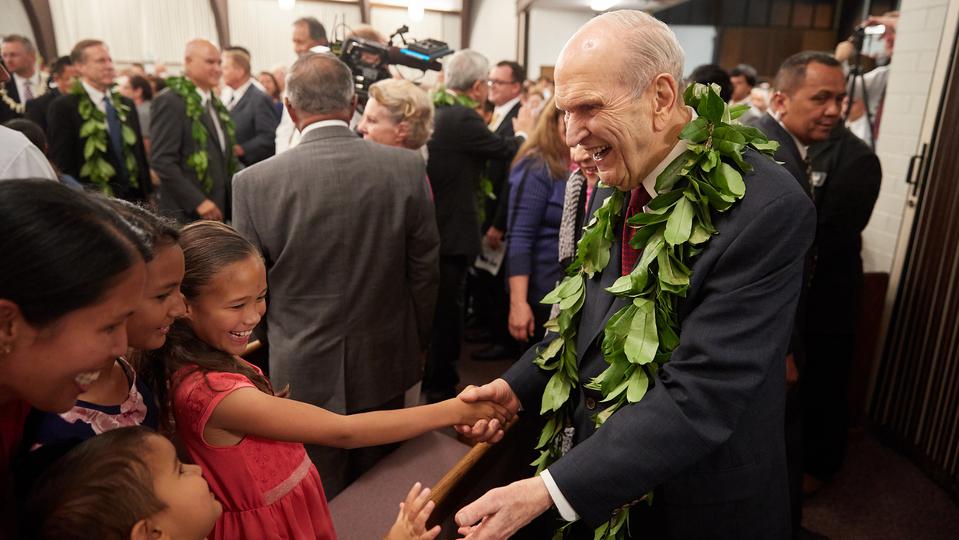
President Russell M. Nelson’s time as prophet of The Church of Jesus Christ of Latter-day Saints will always be marked by the sweeping changes that affected and elevated the big picture of the global church. But he didn’t forget the “small picture” of the individual; the soul hunger we each have, and the spiritual growth we are each want, because he knew that in reality, that is the big picture. You are the big picture. Learning to reach out for the Savior with all our might is the biggest picture there is.
“…find every way you can,” President Nelson said, “to thank our Heavenly Father for sending us His Only Begotten Son”
“Because of Jesus Christ, we can repent and be forgiven of our sins. Because of Him, each of us will be resurrected…Whatever questions or problems you have, the answer is always found in the life and teachings of Jesus Christ. Learn more about His Atonement, His love, His mercy, His doctrine, and His restored gospel of healing and progression. Turn to Him! Follow Him…
“My dear brothers and sisters, I bear witness that Jesus Christ directs the affairs of His Church. I testify that following Him is the only way to enduring happiness. I know that His power is descending upon His covenant-keeping people, who are ‘armed with righteousness and with the power of God in great glory.’ I so testify, with my love and blessing for each of you, in the sacred name of Jesus Christ, amen.”

We love you, President Nelson, and we will miss you. We will carry your love and blessing forward and live better for your example.
Message from President Trump on Beloved Prophet Nelson
— Karoline Leavitt (@PressSec) September 28, 2025








